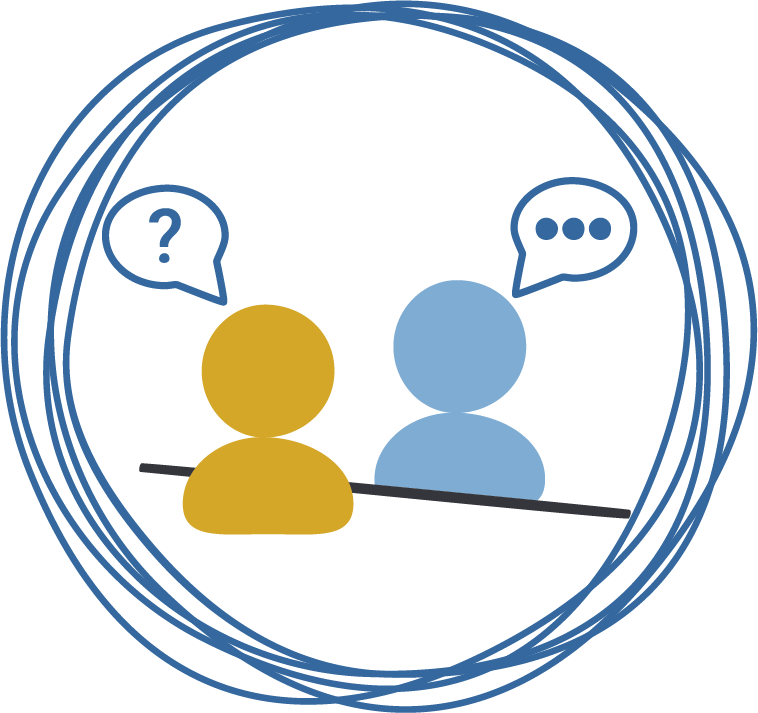Interviews are a great method to get first-hand accounts of the way things work out in the field and the obstacles people face in their everyday tasks.
Design Phase: Investigate
Facilitator: 2
Activity Group: 1
Time: 60 Min
Materials: Notebook, Word Document

Before the Activity
When prepping for an interview with users, take time to connect with your interviewees before you actually sit down together. An introductory email or a pre-interview call can go a long way in helping people be more comfortable with you during the interview. The more comfortable people are, the more information you'll get during the discussion.
As you schedule the time and place, avoid any locations that could be taken as a "power play". If you're meeting in person try to find a neutral location. If you can, meet them on their home turf. A neutral or familiar environment let's people be more relaxed, allowing them to open up during discussion.
Create an interview guide beforehand so each interview can follow a similar flow. Keep in mind that while this method is called "interviews", treat the sessions more like a conversation. Great information comes out of casual discussion, not stiff questioning.
During the Activity
Show up to the interview in a team of two: one interviewer and one note-taker. The role of the interviewer is to be fully involved in the conversation with the interviewee, making eye contact and asking follow up questions. If the interviewer is distracted by taking notes, it can break the flow of conversation and prevent deeper discussion. The note-taker is there to make sure nothing is missed, capturing direct quotes when possible. When taking notes, it's also important to simply capture the responses and not put any interpretation on the information. That part will come later.
Keep in mind that while this method is called "interviews", treat the sessions more like a conversation. Great information comes out of casual discussion, not stiff questioning. Let the conversation go where it will, using the interview guide as just that: a guide. There may be great insights hiding in follow up questions or interesting statements made by the interviewee.
After the Activity
Take at least 10 minutes to debrief with your interview partner. This is best done within one business day, immediately after the interview if possible, to keep the information fresh. During your debrief, pull out the key pieces of information that you uncovered. Ideally, aim for 5, but don't go over 8. You're looking to get the high-impact information, not rewrite the interview notes.
Keep your key findings in a project folder, MURAL, or notebook. you'll use these later with all the other interview key findings to get themes and insights you can use to move the project forward.
